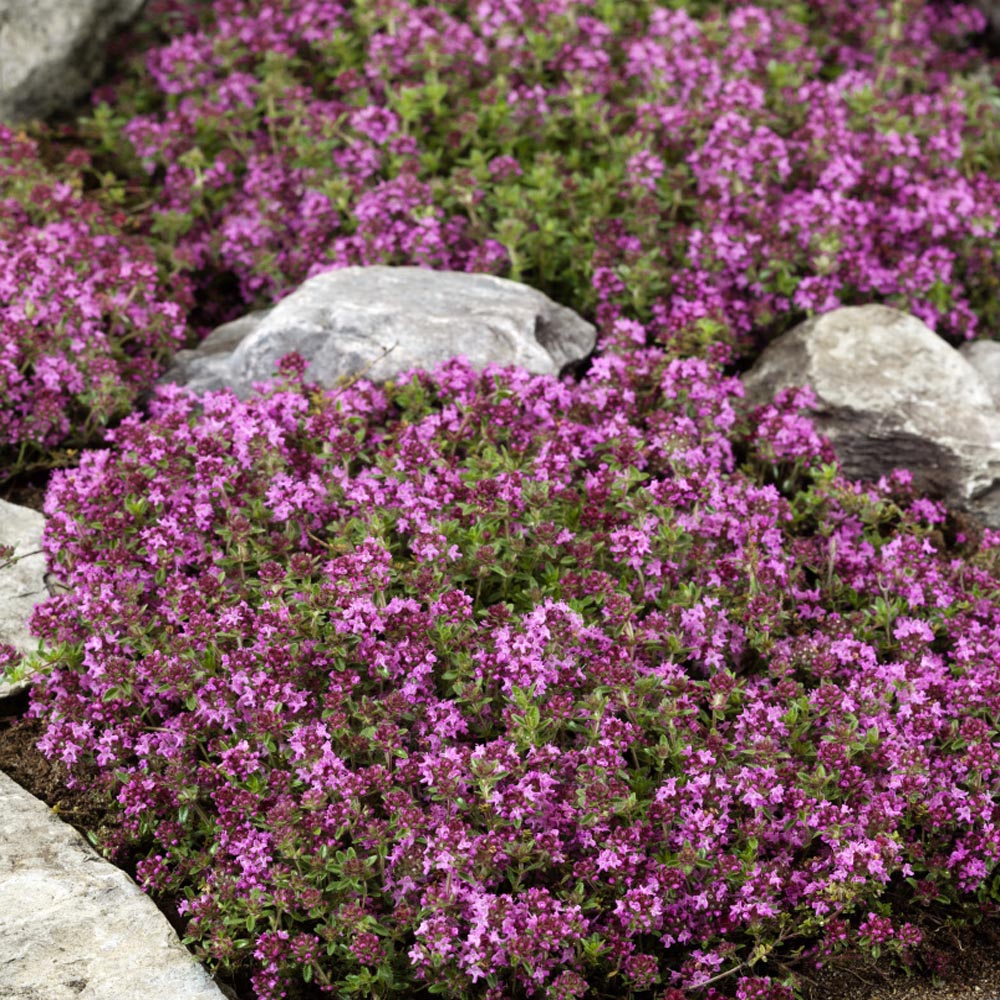

Keep the cutting and soil mix in a sunny area, checking frequently to ensure that it remains moist. Then dip the cutting into rooting hormone and insert it into a hole in premoistened seed starting mix in a small container. Cut as close to the base of the stem as possible and remove the leaves from the bottom third of the stem. To divide an established plant, simply use a trowel to cut out a chunk about 4 inches deep, remove it carefully and transplant into another area with soil that has been premoistened.Īlternatively, you can take a cutting from a healthy stem of creeping thyme during its growing season. PropagationĬreeping thyme can be propagated through either division or from stem cuttings. If the soil is rich and well prepared it will not need any additional nutrients, but poor soil should be supplemented with a delayed-release fertilizer. Though the shallowness of their root system means that they can dry out easily, the plants are able to withstand dehydration once they are mature.Ĭreeping thyme’s need for fertilizer depends upon the quality of the soil in which it is planted. The soil beneath them needs to be kept moist in order to encourage their roots to get established. The creeping thyme’s greatest watering need comes when it is first planted. Placing mulch in the areas surrounding the plants is advised, though the mulch should not come into contact with the plant itself. Tamp down the earth around the plant, making sure that the roots contact the soil below.Īfter planting, the transplants and soil underneath need to be kept moist until contact and acclimation is complete. Dig a shallow hole for each new plant that is just deep enough to have its foliage level with the ground.
#TYPES OF THYME GROUND COVER FREE#
Loosen them until a few of the rootlets are free from the tangle.


If the plant is root-bound, take care when teasing the roots apart. When transplanting creeping thyme, take care not to damage its roots when you remove it from its tray or container.

For creeping thyme that is being used to fill the spaces between flagstones, leave four to six inches between each plant, while creeping thyme being used as ground cover should be spaced much farther apart, at a distance of approximately 12 to 18 inches. Placement and distance between the plants depends upon the type and use. The soil where the creeping thyme is placed needs to be watered several times before planting to allow it to settle and the plants themselves should also be watered on the day that they will be transplanted. The first step before planting is to remove all weeds in the area and to level the ground, as any bumps and uneven areas will show on the surface of the ground cover. This will allow the roots to establish themselves through the growing season.Ĭreeping thyme needs soil with good drainage in order to allow the plant to flourish and spread. Planting should be done in late spring or early summer, after the fear of frost has passed.
#TYPES OF THYME GROUND COVER UPDATE#
Many cooks plant thyme near the kitchen so they can easily snip a stem or two when cooking, and you can even grow them indoors in a sunny window to enjoy the flavor year-round.By Jo Cosgrove | Ecological Gardener, Horticulturist, and Educator – last update on December 2, 2021Ĭreeping thyme does best in an area that gets about four hours of sun a day. Some varieties can even be used as a lawn substitute. There are also some wonderful low-growing varieties that can be planted between rocks and paths, where they'll release their delightful fragrance when brushed past. This tough and rugged perennial often forms dense mats of foliage that are topped with attractive blossoms. Thyme isn't just an herb to grow for adding flavor to food, it can also add plenty of color and texture to your garden.


 0 kommentar(er)
0 kommentar(er)
